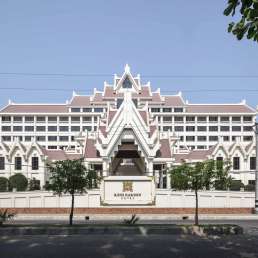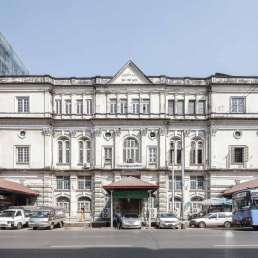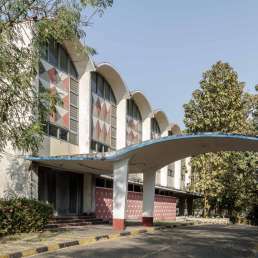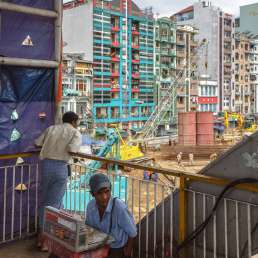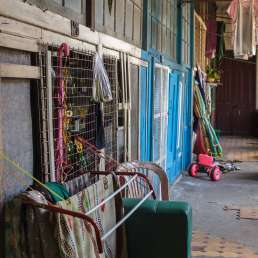Address: 114 Bo Sun Pet Street
Year built: 1936
Architect: AC Martin & Co. (contractors)
This mosque and its trust occupy several land plots on the corner of Bo Sun Pet Street and Mahabandoola Road. Its history began in 1856 when two men, Gulam Hoosain and Shaik Madar, purchased the first plot and erected a timber mosque. A religious trust, or waqf, was created in 1869 to manage the mosque and administer the income from a number of shops built on an adjacent plot on Mahabandoola Road. The first stone mosque opened three years later, but it wasn’t until 1936 that the current structure was erected.
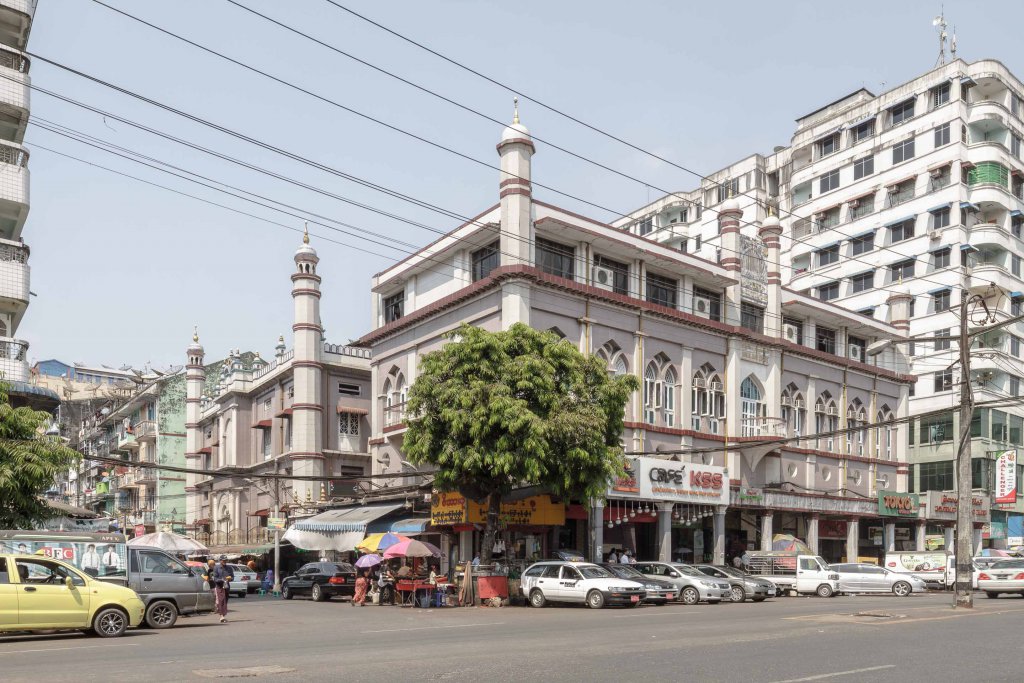
Of the six tenders received, contractor AC Martin was chosen. Martin, or Martirossian as he was known in the Armenian community, came to Burma from Persia and joined the Public Works Department in 1886. He set up his private firm in 1900 and subsequently built many of colonial Rangoon’s buildings, including the General Post Office on Strand Road. That his company built one of the city’s central mosques is a telltale example of Yangon’s cosmopolitan fabric.
The new mosque was built in only seven months. Public infrastructure was chronically poor, and the shortage of water prompted the trustees to install a well in the courtyard. Later, a generator-powered well was added. (Note the large fish swimming in the pond immediately as you enter the mosque.) Whenever there was a shortage of water, the mosque’s wells provided for the neighbourhood. The mosque and especially the buildings surrounding it sustained heavy damage in the war. The portico covering the pavement on Mahabandoola Road was built in 1955. A large hall for the trust was opened in 1963. To build it, the trust had to sanction the removal of a minaret on the corner of Mahabandoola Road and Bo Sun Pet Street.
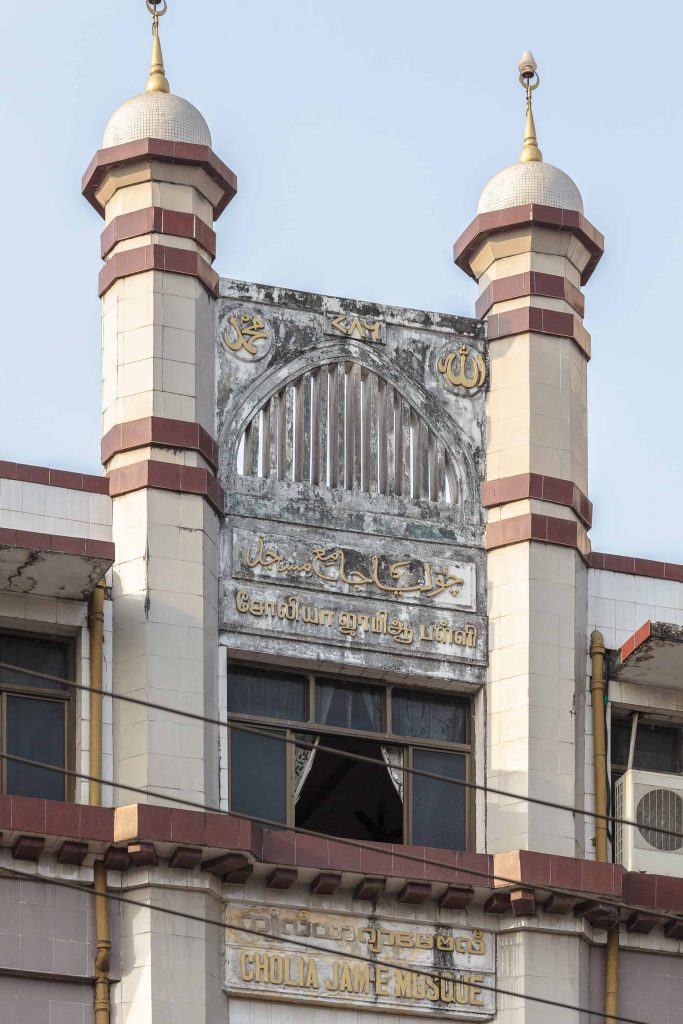
The Supreme Court of Rangoon ruled in 1936 that the term “Cholia Muslim” denotes every Muslim whose mother tongue is Tamil. Etymologically, “Cholia” has its origins in the ancient Indian kingdom of Chola (9th–13th century AD), situated in today’s Tamil Nadu. Muslim traders from this part of India have a long history of traversing the Bay of Bengal, which long predates the arrival of Western colonists. Under British imperial rule, they increasingly settled in Burma, especially Yangon. Many returned to India in the wake of the Japanese occupation and after independence. In his Crossing the Bay of Bengal, the historian Sunil Amrith points us to the “Burma Bazaar” in Chennai, set up by returnees from Burma in the 1960s, and the fact that “many Tamil towns still have a ‘Burma Colony’”.
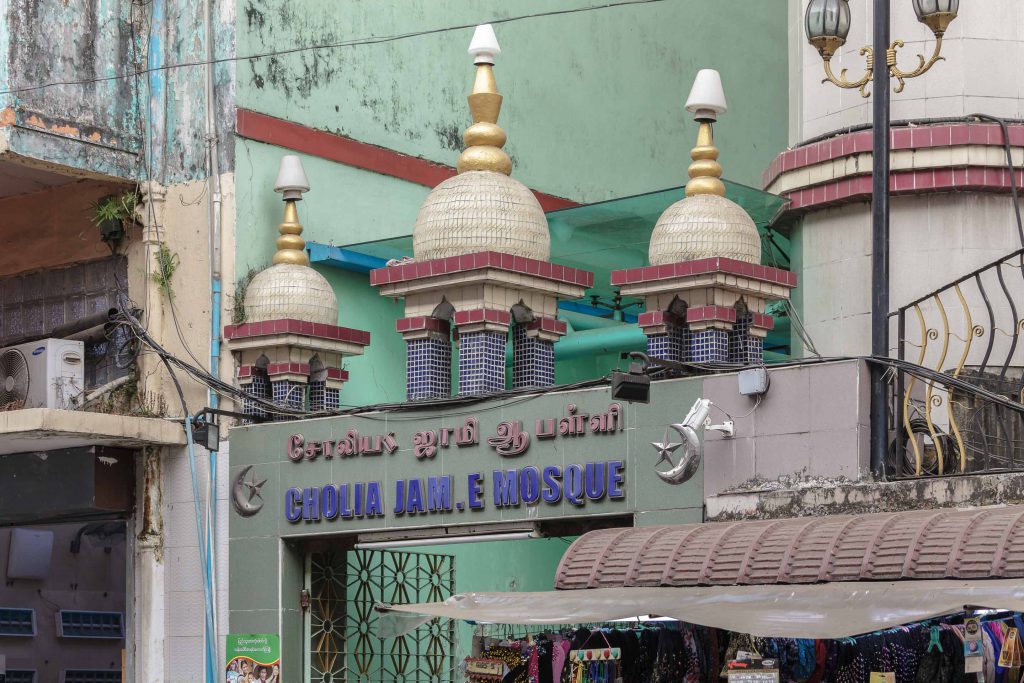
By 2004, the Cholia Muslim Religious Fund Trust was run by about 100 well-off Tamil Muslims, although the mosque also welcomes non-Tamil Sunnis for prayers. The charity organisation assists the poor from the Muslim community, notably poor elderly women. It also ran computer classes and a HIV/AIDS awareness campaign.
The lassi shop between the entrance of the mosque and the corner of Mahabandoola Road is a highly recommended pit stop during your downtown adventures.
